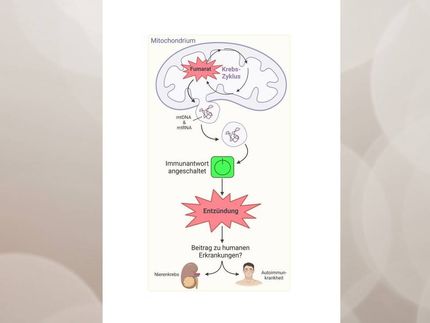How unchecked alarms can spark autoimmune disease
Autoimmune disease mechanism identified
One in five Americans suffers from autoimmune disease, in which the immune system goes off-track and attacks the body's own cells. Cornell researchers have identified a signaling mechanism in immune-system cells that may contribute to this mistake, opening the door for possible new therapies for autoimmune diseases such as lupus and arthritis.
Cynthia Leifer, assistant professor of microbiology and immunology in the College of Veterinary Medicine, and colleagues described the mechanism in the European Journal of Immunology. The problem lies in what are called innate immune cells, the first responders to infection.
"Innate immune cells have internal watchdogs called TLR-9 receptors that set off alarms whenever they encounter invaders," said Leifer. "They look for general classifying patterns [in DNA] to determine whether something is a virus, bacterium, protozoan, or part of self."
However, some of these patterns exist both in invading organisms and the body's own cells, so mistakes can arise.
"We are mapping the critical regulatory mechanisms that keep these receptors from responding to self-DNA so that we can know if and how they predispose people to autoimmune disorders when they fail," Leifer said.
Innate immune cells engulf things that look dangerous, tear them open, and release their components, including DNA. When TLR-9 receptors see DNA that identifies microbes, they send a signal to fire up more immune-system activity, including inflammation and the creation of antibodies. But before a receptor can work, enzymes in the cell must prepare it by chopping off part of the receptor molecule and leaving a part that can bind to microbe DNA.
From there, Leifer believes it's a numbers game. If too many receptors are prepared, they may respond to the small amount of self-DNA that makes its way into immune cells, triggering an autoimmune response. So the immune cell has a regulatory mechanism, an enzyme pathway that cuts prepared receptors in a second place.
Working with cells in culture, Leifer identified this second chopping event, which cuts TLR-9 at a different site. This produces a molecule that binds to DNA, blocking it from reaching the prepared receptors, and does not send a signal.
"People without autoimmune diseases have the right balance of these two chopping events," Leifer said. "Our studies suggest that people with a propensity for these diseases might have a defect in this pathway that allows more prepared receptors to signal for immune responses. This may be a potential target for therapies designed to help quiet those alarms."
A second but interrelated problem Leifer has tackled involves how TLR-9 moves through an immune cell from the placewhere it is created to its working site. In earlier work she described the protein sequences in TLR-9 that act as address labels guiding where the receptor travels.
"We think they're interrelated because if you don't travel properly you don't get chopped properly," she said. "If TLR-9 ends up in the wrong place at the wrong time, it can sound a false alarm.
Organizations
Other news from the department science

Get the life science industry in your inbox
By submitting this form you agree that LUMITOS AG will send you the newsletter(s) selected above by email. Your data will not be passed on to third parties. Your data will be stored and processed in accordance with our data protection regulations. LUMITOS may contact you by email for the purpose of advertising or market and opinion surveys. You can revoke your consent at any time without giving reasons to LUMITOS AG, Ernst-Augustin-Str. 2, 12489 Berlin, Germany or by e-mail at revoke@lumitos.com with effect for the future. In addition, each email contains a link to unsubscribe from the corresponding newsletter.





















































